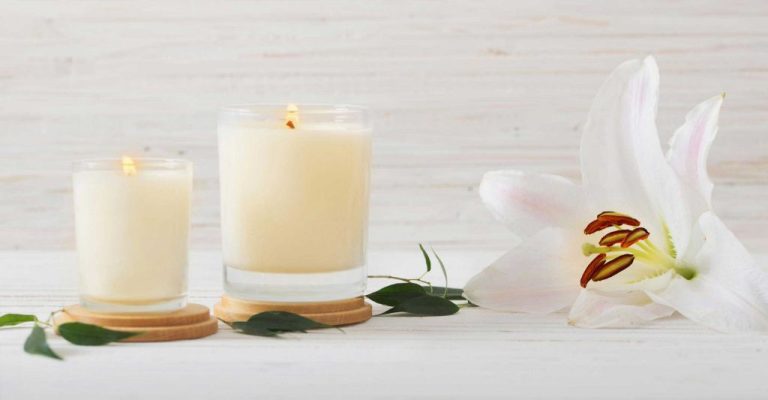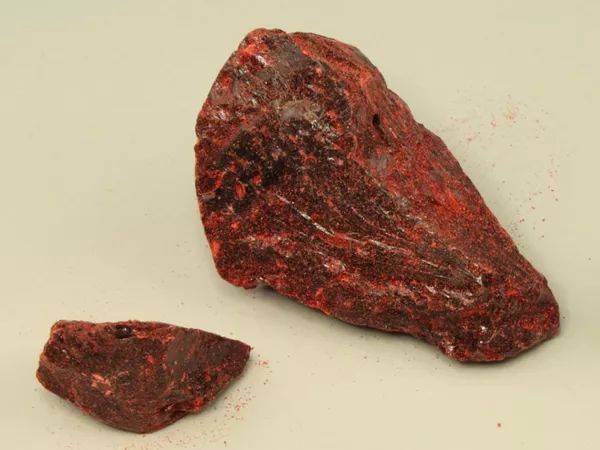What Essential Oil Smells Are Best For Perfume?
Introduce Essential Oils in Perfume
Essential oils are concentrated hydrophobic liquids containing volatile aroma compounds from plants. They are called “essential” because they contain the “essence” of the plant’s fragrance. Essential oils have been used in perfumery for thousands of years, dating back to ancient Egypt, due to their natural scents and ability to retain fragrance over time.
The primary benefits of using essential oils in perfume include:
- They provide natural, authentic fragrance profiles from plants and botanicals.
- They often have greater longevity than synthetic perfume ingredients.
- Certain essential oils like sandalwood have excellent fixative properties to make scents last longer.
- Essential oil scents may be more pleasing to some customers than synthetic fragrances.
- Some essential oils like lavender have calming or uplifting effects.
- Using pure essential oils allows creating unique, artisanal perfume blends.
Overall, essential oils allow perfumers to harness natural botanical extracts for beautiful, complex, long-lasting perfume compositions.
Most Popular Essential Oil Scents
When creating essential oil perfumes, there are certain scents that are commonly used for their popularity, effectiveness, and versatility. Some of the most popular essential oils used in perfumery include:
Lavender
Lavender essential oil is one of the most versatile and popular scents used in perfumes. With its floral, herbaceous, and slightly woody aroma, lavender adds a clean and calming fragrance to perfumes. It blends well with many other scents like citrus, woods, and spices. Lavender is also known for its soothing properties. (Source)
Rose
Rose essential oil, most commonly rose otto, has a rich, floral, sweet scent that is a staple in many perfume formulas. Prized for its depth and complexity, rose adds elegance, femininity, and romance to perfume compositions. Though expensive, its lingering aroma makes it a worthwhile addition even in small amounts. (Source)
Jasmine
The sweet, exotic floral aroma of jasmine is highly sought after in perfumery. Though cost prohibitive in its pure form, jasmine absolute is often diluted or synthesized due to its intensely fragrant and well-rounded scent profile. It has a warm, rich bouquet that enhances other floral notes. (Source)
Sandalwood
With its deep, woody, and subtly sweet aroma, sandalwood essential oil is used to provide a rich base note to perfumes. It has excellent lingering power on the skin and mixes well with citrus, oriental, and floral scents. Sandalwood adds complexity and depth to fragrance compositions. (Source)
Citrus Scents

Citrus essential oils like grapefruit, lemon, and orange blossom can provide an uplifting, energizing base note for perfumes. Citrus oils are extracted from the rinds of various citrus fruits and capture their bright, fresh scents. According to the Perfumer’s Apprentice, their Citrus Fragrance Oil is a wonderful blend of orange, lemon, and lime for a crisp, bold citrus scent.
Grapefruit essential oil has a sweet, tangy aroma that blends well with florals. According to Inesscents, their Citrus Sunshine Perfume combines grapefruit with lavender, lemon, and lime for a bright, happy citrus perfume. Oras Amazing Herbals also offers a Citrus Sunshine Perfume Oil with a similar citrus blend. The tangy, uplifting scents of citrus oils can provide the perfect summery base note.
When using citrus oils, take care to avoid phototoxic varieties like bergamot that can cause skin irritation when exposed to sunlight. Always dilute essential oils properly in a carrier oil. Citrus scents layered with subtle florals and woods can create the perfect energizing perfume for daytime wear.
Floral Scents
Floral essential oils like rose, jasmine, and lavender are extremely popular for perfumes, especially feminine and romantic scents. The beautifully complex yet delicate fragrance profiles of floral oils make them an excellent base for perfumes.
Rose oil is one of the most prized ingredients in perfumery. It has a rich, sweet, floral scent that is widely considered romantic and sensual. Rose oil can be quite expensive, so it is often used sparingly in perfume compositions. A little rose oil goes a long way in providing an authentic floral bouquet. Some of the most famous perfumes showcase rose, including Chanel No. 5, Joy by Jean Patou, and Agent Provocateur Rose.
Jasmine is another quintessential floral perfume ingredient. It has an intoxicating, sweet, and heady aroma. Jasmine is a component of many classic women’s perfumes, like Chanel No. 5 and Miss Dior. Using jasmine oil in perfume gives a rich, vibrant floral heart note.
Lavender is beloved for its relaxing, herbaceous, and slightly powdery scent. It blends well with other floral oils like geranium and neroli to create a sophisticated floral perfume. Lavender adds a light freshness that works well for daytime wear. Some popular lavender perfume oils are Lavandula by Taylor Swift and Scent of Peace by philosophy.[1]
Woodsy Scents
Some of the most popular woodsy essential oils used in perfume include sandalwood, cedarwood, and pine oils. These earthy, aromatic oils evoke a sense of the great outdoors and blend well with citrus, spice, and floral notes.
Sandalwood oil is distilled from the heartwood of sandalwood trees and has a sweet, woody, balsamic scent. It is a base note that helps anchor other fragrances and also has natural fixative properties to make scents last longer (Now Foods, 2022). Sandalwood blends well with bergamot, geranium, and vetiver.
Cedarwood oil from trees like Atlas cedar has an earthy, camphoraceous aroma. It acts as a middle note and helps enhance other woodsy notes like pine and fir balsam. Cedarwood mixes nicely with citrus and floral oils (Source Vital, 2022).
Pine oil, distilled from pine needles and cones, has a crisp, forest-like fragrance. Its bright, resinous scent works both as a top and middle perfume note. Pine combines with complementary oils like bergamot, sage, and juniper (Eternal Essence Oils, 2017).
Overall, woodsy essential oils create warm, comforting scents that are reminiscent of the great outdoors. Their earthy aromas blend nicely with citrus, spice, and floral perfume notes.
Spicy Scents
Some of the most popular spicy essential oils used in perfume include cinnamon, clove, and black pepper. These oils have bold, sensual aromas that add intrigue and warmth to a fragrance blend.
The warm, sweet aroma of cinnamon oil is known for its aphrodisiac properties. It has an enticing scent that evokes feelings of passion and romance. When blended into perfume, cinnamon oil provides a spicy accent that is both seductive and comforting. According to Source Vital, cinnamon bark oil is often described as smelling “sweet, spicy, and woody.”
Clove oil is derived from clove buds and has a strong, piercing scent. It has notes of spice paired with subtle floral and fruity tones. The rich aroma of clove makes it an anchoring base note in perfume. As noted by Pure Fragrance Oils, clove oil provides “warmth and depth” when blended into a fragrance composition.
The bold, peppery scent of black pepper essential oil adds a spicy kick to perfumes. According to Now Foods, black pepper oil has an aroma profile with “sharp, refreshing, clarifying, energizing, and warming qualities.” When used sparingly in a blend, it can create an alluring contrast to sweet, floral notes.
Choosing Your Scent Profile
When creating your own custom essential oil perfume, it’s important to choose a scent profile that matches your mood and the occasion. Some scent combinations can be uplifting, relaxing, or inspiring, while others may be more sensual, energetic, or luxurious.
Start by considering when and where you’ll be wearing your perfume. For a relaxing day at home, opt for light, soothing scents like lavender or neroli. If you want an energizing perfume for the office or a date, go forcitrus and floral mixes. Sandalwood, vanilla, and musk make sensual nighttime scents. For formal events or nights out, sophisticated blends with notes like bergamot, rose, and jasmine are perfect.
You can also match scents to your emotions. Feeling stressed or anxious? Calming chamomile, clary sage, and ylang ylang can help relax your mind. Need a mood boost? Sweet orange, grapefruit, and lemon are naturally uplifting. To ease sadness, try warming cinnamon, clove, and nutmeg.
When in doubt, experiment! Mix scents and test combinations on blotting paper. The beauty of essential oil perfumes is you can create endless personalized options to suit your every need.
Blending and Layering
When blending essential oils for perfume, it’s important to understand how to combine scents in a harmonious way. Perfumers classify essential oils into notes based on the rate of evaporation and scent longevity:
Top notes evaporate quickly and give the initial burst of scent. These include citrus oils like lemon, lime, grapefruit, as well as herbs like lavender. Top notes usually make up 10-20% of a blend.
Middle notes form the heart of the fragrance and emerge once top notes dissipate. Floral oils like geranium, jasmine, rose are commonly used as middle notes, making up 30-60% of the blend.
Base notes ground the perfume and provide lasting fragrance. These are often woody or earthy oils like sandalwood, cedarwood, vanilla. Base notes account for 10-30% of the formula.
When layering scents, apply top notes first so they can fully develop before being shaped by middle and base notes. Finding complementary blends comes down to experimenting with scent families. Pair fresh citrus with herbaceous lavender and woodsy cedarwood for a vibrant perfume, or blend feminine florals like rose and jasmine with musky vanilla for a romantic scent.
Application and Wear
When applying an essential oil perfume, less is often more. Start with 1-2 drops applied to pulse points like the wrists, behind the ears, and décolletage. The warmth of the skin helps diffuse the scent. Essential oil perfumes tend to be more concentrated than alcohol-based fragrances, so a little goes a long way.
Scent duration will depend on the carrier oil used. Fragrance oils diluted in coconut oil or jojoba oil can last 6-8 hours on the skin. More absorbent carrier oils like fractionated coconut oil allow the scent to last even longer – up to 12 hours. Oils are also longer-lasting than alcohol-based perfumes which tend to fade after just 2-3 hours on the skin [1].
Take care not to overapply, as this can cause the scent to be overpowering. Start with 1-2 dabs and increase amount for longer wear time. Storing in a cool, dark place between uses will help extend the life of the perfume.
Safety and Storage
When using essential oils in perfumes and fragrances, proper storage and safety precautions are important to maintain quality and prevent irritation. Here are some key tips:
Dilute essential oils properly in a carrier oil or alcohol before applying to skin. Using undiluted oils directly can cause sensitization and irritation. A safe dilution is typically 2-5% essential oil in a carrier. Test oils on a small skin patch first.
Store essential oils in dark glass bottles out of direct sunlight to preserve the aromatic compounds. Keep them in a cool, dry place like a pantry or cupboard. Refrigeration can help extend shelf life, but is not required. Avoid freezing oils or exposing them to heat sources (cite: https://www.bmvfragrances.com/blogs/essential-oil-safety-tips-for-proper-use-and-storage).
Watch for expiration dates and signs of oxidation like change in color or scent. Citrus and floral oils have shorter shelf lives around 6-12 months. Woody and spicy oils may last 1-2 years or more. Replace oils that smell “off” or look cloudy (cite: https://www.fromnaturewithlove.com/library/storagefragranceoils.asp).
Follow proper safety precautions and enjoy your homemade essential oil perfume blends!



